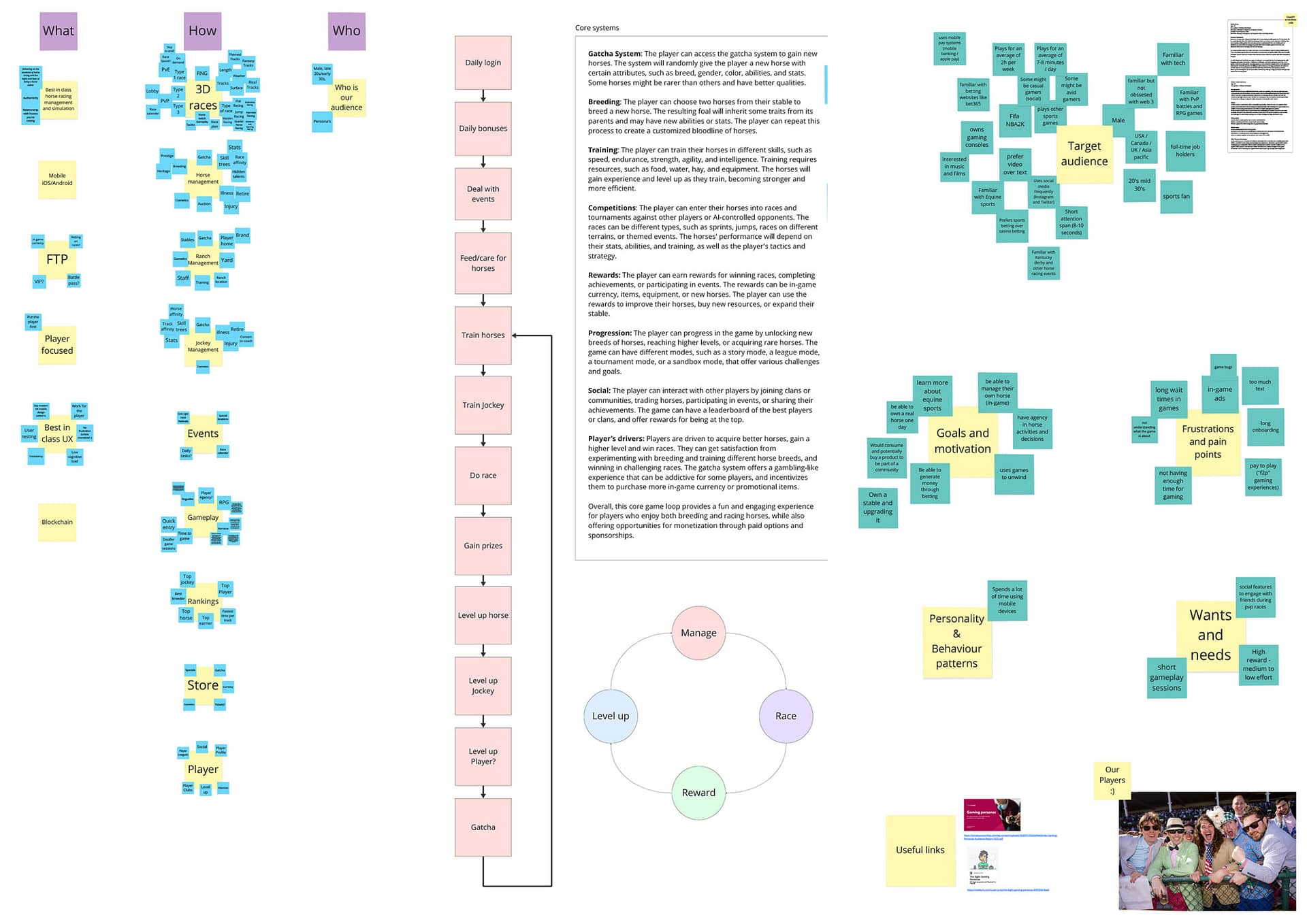Horsepower
IOS, Android – Lead UX/UI
2022
Investor Prototype – view fullscreen
The Project:
My involvement in this project began at its inception during the ideation phase. Collaborating with a team of four directors, I played a crucial role in generating design concepts and supporting the ideation process through the use of rapid prototyping. The outcome of our efforts was the creation of a high-fidelity prototype in Proto.io, which served as a vital tool in securing funding for the project. Within the team, I assumed the lead role in making UX-related decisions and implementing a user-centric design approach.
The Process:
- Daily Design Workshops: To foster creativity and collaboration, we conducted daily design workshops with the leadership team. These sessions, facilitated using Miro and Figma, provided a platform for ideation, brainstorming, and the exploration of innovative ideas.

- Iterative Prototyping: Building upon the insights gained from these workshops, I leveraged rapid prototyping in Proto.io to create low-fidelity prototypes. These prototypes were instrumental in visualizing and refining the evolving design concepts. The iterative nature of this process allowed us to continually refine our ideas.
- Design Document Completion: Our commitment to refining the design was relentless. We repeated the cycle of ideation, prototyping, and refinement until we had a comprehensive and well-documented game design that received final approval from the stakeholders.

- Mapping the UX: To ensure a consistent and user-friendly experience throughout the game, we meticulously mapped out the entire user journey. This comprehensive understanding of the user experience translated into a design toolkit that served as a guide for design consistency.
- User-First Monetization: Working closely with the design director, we developed a user-first monetization policy. This approach prioritized the user’s experience and needs, ensuring that monetization strategies were seamlessly integrated into the foundation of the game without compromising user satisfaction.
- Personas and User Testing: To inform our design decisions, we created personas that represented the target audience. We conducted user testing sessions using prototypes to gather valuable feedback and validate our design choices.
- Collaboration with UI: A harmonious collaboration with the UI team was essential to maintain design consistency. This ensured that the visual elements of the game aligned with the overall user experience.
Final Thoughts:
- Innovative Mechanics: This project was particularly intriguing due to the incorporation of mechanics not commonly seen in mobile games. It challenged us to think creatively and push the boundaries of mobile gaming.
- User-Centric Ideation: The user-first design approach we implemented played a pivotal role in guiding the team through a challenging ideation phase with enthusiasm and confidence. Prioritizing the user’s perspective fostered a user-friendly and engaging game.
- Adaptation to Portrait Mode: Three months into the project, we faced the task of exploring a shift from landscape to portrait mode. This transition required extensive rapid prototyping and user testing, aligning with a trend in the mobile gaming market toward a more ergonomic portrait approach.
In conclusion, this project stands as a testament to the power of a user-centric design approach and iterative prototyping in the ideation and development of mobile games. It was a project filled with innovation, creative challenges, and a commitment to delivering an exceptional user experience.
Vertical Prototype – view fullscreen
